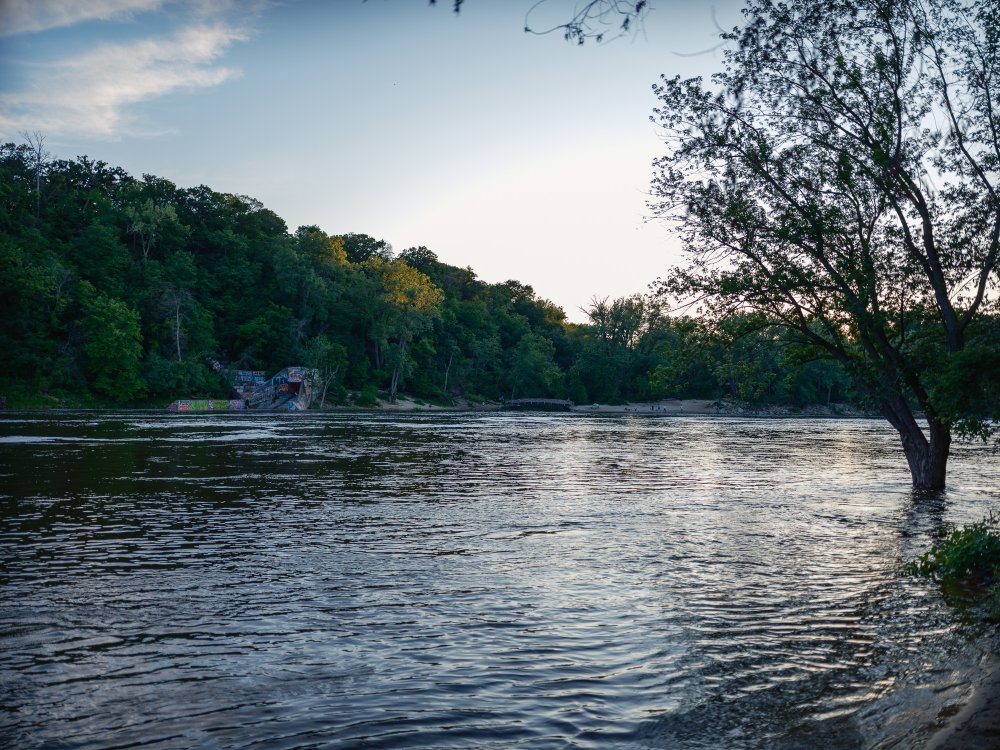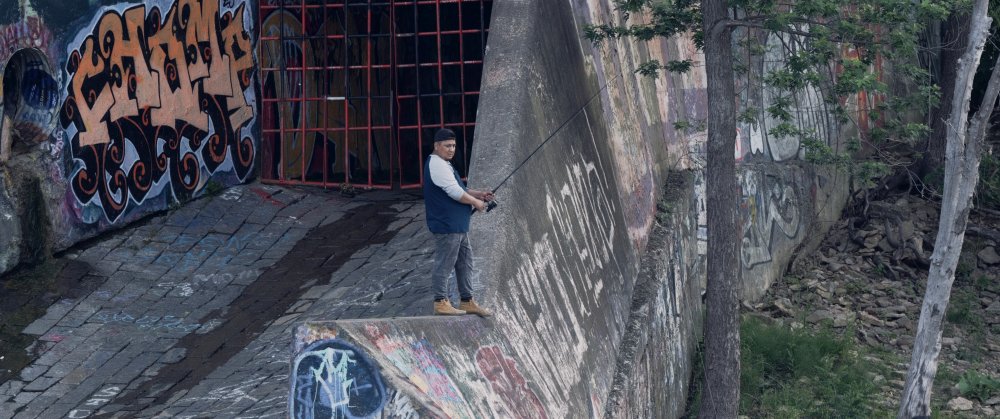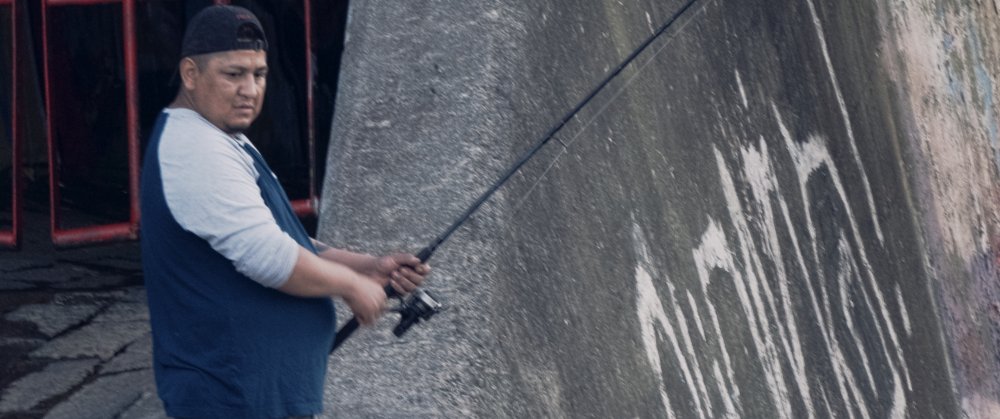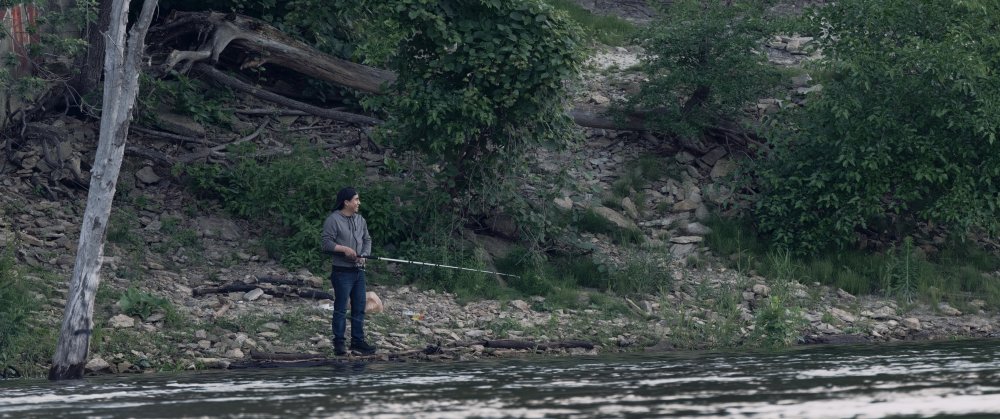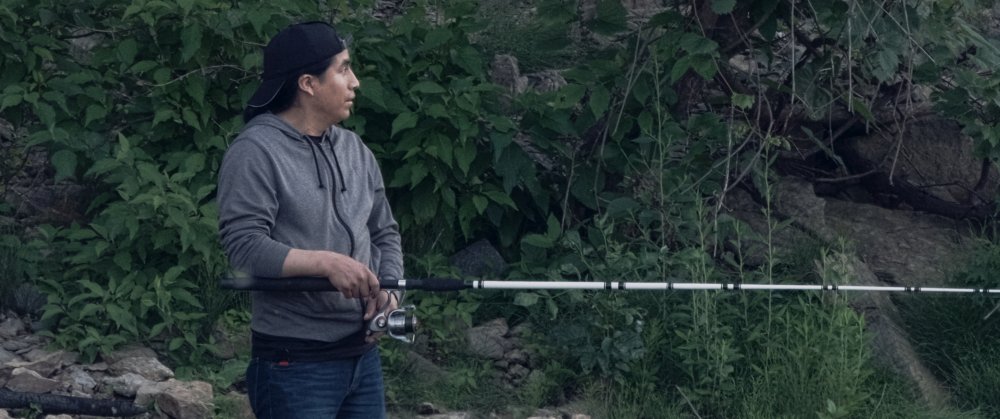
eatstoomuchjam
Members-
Posts
982 -
Joined
-
Last visited
About eatstoomuchjam

Profile Information
-
Gender
Male
-
Location
Minneapolis, sometimes
-
Interests
Filmmaking, photography, DIY camera modification, camping, ghost towns, abandoned places, caves, tunnels, international travel, staring blankly into space
-
My cameras and kit
More than will fit in this little box
Contact Methods
-
Website URL
https://www.youtube.com/eatstoomuchjam
-
Instagram
https://www.instagram.com/eatstoomuchjam
Recent Profile Visitors
The recent visitors block is disabled and is not being shown to other users.
eatstoomuchjam's Achievements

Frequent member (4/5)
735
Reputation
-
 eatstoomuchjam reacted to a post in a topic:
The Aesthetic (part 2)
eatstoomuchjam reacted to a post in a topic:
The Aesthetic (part 2)
-
 eatstoomuchjam reacted to a post in a topic:
Arri is the new Adobe
eatstoomuchjam reacted to a post in a topic:
Arri is the new Adobe
-
 eatstoomuchjam reacted to a post in a topic:
Frame Grab Software
eatstoomuchjam reacted to a post in a topic:
Frame Grab Software
-
 Davide DB reacted to a post in a topic:
Arri is the new Adobe
Davide DB reacted to a post in a topic:
Arri is the new Adobe
-
I hadn't thought about that, but if that's an option, I guess I could have done it. Though at this point, I doubt I have an installer around for the old version. Yes, for someone who needs multiple or many Adobe products, the current pricing is somewhat advantageous vs the old pricing. A lot of people, me included, are not that person and use Lightroom almost exclusively. The only time I use Photoshop is when I need to run SRDx. The current cost for the entire suite is $70/month - over 3 years, that's $2,520. So... wow. That's an additional $20 in cost over $2,500. So it doesn't seem "much cheaper" to me. It seems to be "the same cost." This is the pitch that is made for subscription software. It's not applicable to most people. I use Lightroom often enough that it doesn't make sense to turn on and off my subscription all the time. There's no need to guess. They went with it because it radically increased their profits and gave them a steady predictable monthly revenue instead of an unpredictable spiky revenue that got reduced if people didn't like the new version. Now it doesn't matter if you don't like the new version. F U consumer, you are paying for it anyway. Here are some charts that show the true reason that Adobe went to a subscription model - prior to it, they had a pretty consistent/flat 4-5 billion dollars per year in revenue. This is plenty of money to develop their software. It has been on an upward ramp since then and now they are making 20 billion dollars per year. If it flattens again, expect them to increase subscription pricing to further enrich their shareholders. This is why subscription models exist - to enrich shareholders, not to make your life better. I used to work for a major e-commerce company - discussions of subscription billing, etc, were very rarely phrased in terms of the benefit to end users. https://www.macrotrends.net/stocks/charts/ADBE/adobe/revenue The free version is intended to stay. Petty said in their NAB livestream that he expects that, at some point, people will be asked to pay for upgrades to the Studio License to fund continuing development of Resolve. This is, for me, fully acceptable. My existing version of Resolve Studio will keep working as long as it needs to work and if I find the features in a new version to be compelling, I will pay them for it. This is a healthy business relationship.
-
 eatstoomuchjam reacted to a post in a topic:
Arri is the new Adobe
eatstoomuchjam reacted to a post in a topic:
Arri is the new Adobe
-
 Andrew Reid reacted to a post in a topic:
Arri is the new Adobe
Andrew Reid reacted to a post in a topic:
Arri is the new Adobe
-
Well, that's just great in concept! I'd actually prefer smaller with a smaller screen and a c mount, but if the whole thing is open, I'm sure that mods will come fairly quickly. Looking forward to seeing more from the project!
-
 eatstoomuchjam reacted to a post in a topic:
Le Faux Bolex
eatstoomuchjam reacted to a post in a topic:
Le Faux Bolex
-
Is the last sentence intended a a joke? Lightroom-only subscriptions are $12/month. That's $144/year. In 2017, Lightroom cost $150 and you could use that copy of Lightroom for as long as you wanted. If Adobe released a new version with features that you didn't want or need, you didn't need to buy it. And this might blow your mind, but... about 95% of the "features" that Adobe have added since going to the subscription model are things I don't need, want or use. https://fstoppers.com/apps/creative-cloud-it-time-ditch-adobe-200441 Unfortunately, the version from 2017 has no chance of opening any files that I take with my modern cameras. Previously, I would have probably bought a new version of Lightroom every 2-3 years, as needed, to support my new camera. Now I have to spend 3 times as much to continue using my photo editing software. And again, many of the features that Adobe add are completely disjointed from what I would want. Making me pay 3x as much to keep using the software to support the development of features that I don't want is not a consumer-friendly practice. I'm not sure what malfunction you're having that makes you think that Adobe wouldn't have developed things like better denoising and debayering algorithms if they released new versions of the software that people had to pay for. In fact, they might have spent more time on those things. And if they released a new version that didn't improve that and only added, for example, AI object insertion, I could punish them by not buying it and continuing to use the software I already had. Now, punishing them is also punishing myself because I have to learn to use entirely new software, transfer 20+ years of images in a catalog, and find new plugins (which sometimes don't even exist, such as SRDx which I use to clean up dust from film scans and only works with Photoshop). Do you work for Adobe? You seem really motivated to say how paying more for their software so that they can develop features that many users don't want is somehow good for the users.
-
 alsoandrew reacted to a post in a topic:
Arri is the new Adobe
alsoandrew reacted to a post in a topic:
Arri is the new Adobe
-
 Davide DB reacted to a post in a topic:
Arri is the new Adobe
Davide DB reacted to a post in a topic:
Arri is the new Adobe
-
 Davide DB reacted to a post in a topic:
Arri is the new Adobe
Davide DB reacted to a post in a topic:
Arri is the new Adobe
-
 eatstoomuchjam reacted to a post in a topic:
Arri is the new Adobe
eatstoomuchjam reacted to a post in a topic:
Arri is the new Adobe
-
 eatstoomuchjam reacted to a post in a topic:
Panasonic Lumix S1R Mark II coming soon
eatstoomuchjam reacted to a post in a topic:
Panasonic Lumix S1R Mark II coming soon
-
 KnightsFan reacted to a post in a topic:
Arri is the new Adobe
KnightsFan reacted to a post in a topic:
Arri is the new Adobe
-
I thought/assumed that the choice of cameras for f1 were similar to the reason that studios have been using Ronin 4D for a bunch of stuff - and why the last couple of Mission Impossible films used Z Cams for the stunts - because there's no Arri that could possibly fit in the places where they put the custom Sony cameras (just as there's no Arri that can be usable on a gimbal as quickly as the R4D can be ready and because there's no Arri that can fit in a lot of the places that the Z Cam does). It's not to say that the Venice line isn't really good, it certainly seems to be, but on a movie with a budget of $100,000,000, the difference in price between shooting on Alexa and shooting on Venice is basically a rounding error.
-
Curren Sheldon (documentary filmmaker/DoP) did some testing with the S1 II and the S1R II for overheating. For those of you who are in countries that don't use freedom units for temperature, 80F is about 27C and 92F is about 33C. tl;dw - On a hot day sitting in the shade, neither the S1 II nor S1R II overheated after recording for hours. With the camera sitting in the sun on a hot day, both could overheat after a while with the times being really similar when configured the same. Using a dummy battery and external SSD makes a big difference. If you need to roll long takes (10+ minutes) with the camera sitting in direct sunlight on a hot day, neither is the right camera for you (really, very few cameras are going to work for you here). If you're shooting indoors or are able to put the camera in the shade, both are fully capable of very long recording times without overheating.
-
I was with you on "it's OK to have a license as long as there's an option for perpetual," but this is the part where you're losing me. Subscriptions, as currently implemented by companies like Adobe, are actually extremely consumer-hostile. You're right that it's good to have an ongoing source of revenue, but you're completely ignoring that they now have no impetus whatsoever to build features that people actually want. If I have Lightroom 5 and Adobe release Lightroom 6, I can look at the features that were added. If none of them are something I want, I keep using Lightroom 5. If Adobe completely misses the mark with customers, few or no people buy version 6 and they are forced to course correct or go out of business. If they go out of business, the copy of Lightroom 5 that I have keeps working forever. Maybe eventually it won't run on a new computer, but I have virtual machines or my old computer as options still. In a subscription world, I pay Adobe every month to keep using the software that I already have. They can waste as much time and money as they want on shitty new features that I don't want or care about. I still have to pay for them. They want to spend 1000 hours developing an integration between Lightroom and a stock photo site so they can pull extra revenue through a deal with the stock photo company? I don't care and I'll never use it. But I'm still paying for it. The company spends a bunch of time integrating their own cloud service which would charge me even more money to store my files? Don't want it, probably will never use it, still funding the development. If a competitor has different features that I want, I can certainly move to their software, but unless the interface is identical to what I'm used to, now I lose time and effort re-training on how to use the other software. They know that a lot of people aren't going to take that time and effort so the money keeps flowing in. Plus maybe I've spent hundreds of hours in something like the Lightroom catalog rating and tagging things or doing some other activity that isn't necessarily stored in the XMP sidecar (not sure if ratings and tags are) and moving that to another software package would eat a ton of my life. Stop using the software for a while? Sometimes subscriptions are easy to pause or stop, but a lot of times, they are a pain in the ass to stop. Once again, extra money keeps flowing in because people forget the subscription or give up on cancellation because they'll probably need it again sometime in the future. You are arguing against yourself here. If I own the software and it doesn't have to check a central license server every time it starts up, I can open my files in perpetuity. Virtual machines are a thing and allow running older software basically forever. On the other hand, if I had a file created in some version of Adobe's software in a format that isn't supported elsewhere (not sure if this exists) and I don't pay a ransom to Adobe, those files are now dead to me. Also, if Adobe decides to stop supporting that software because not enough people are paying the subscription, those files can never be opened again. Go offline for a month because you're traveling in the middle of nowhere and/or don't want to pay for a local sim? Sucks to be you, you won't be editing anything after a few days because the software can't phone home. This is increasingly a concern in the gaming industry as well - there's even a petition and a movement within Europe about it at https://www.stopkillinggames.com/ Companies intentionally build their games to require an online connection and if it's gone, the game stops working. Meanwhile, eventually most people stop playing and it costs money to run/patch/maintain the servers so the company turns them off. Wanna play that game that you loved a few years ago? Too bad. Even if you have it still installed on your computer, it now serves no purpose other than to waste disk space. Anyway, Adobe announce record profits all the time. I'm still using Lightroom about like I was 10 years ago. I should probably try Capture One again. I have kind of hated it every time I installed it, but at least their model is less offensive - option for a perpetual license or subscription, and if converting from subscription to perpetual, some of the subscription costs are prorated toward the purchase.
-
I only made it about 5 minutes through the video before I got bored with it so maybe he addresses some of this after that. But I'm not sure why it's news that Arri give people an option to buy the full camera or a base model that disables some features until they're enabled. That's been a thing for a long time. When one buys the base model, there are options to pay to enable those features on a temporary or permanent basis. It's one of the reasons that when you see used Arris for sale, they'll frequently say things like "includes high-speed license" or "includes raw license." Speaking for myself, I kind of hate subscriptions in general for this kind of thing, but that is very much mitigated by having the option for a permanent license. I still don't like it a lot since (in most cases), it's not really reducing the camera price. In the case of things like the GH4/5, it's not like Panasonic would have needed to charge more for the camera if they just threw in vlog-l. In Arri's case, I suspect that the decision was pushed by big rental houses - if I'm a rental house, a reduced cost base model lets me buy more cameras. Add a license to enable certain features and I can just tack that onto the price of the rental. Renting for a week? X dollars. You want raw on that rental? Add Y dollars. Camera reaches end of service life, the buyer can turn on any feature they want on a permanent basis. I don't love it, but it's not terrible.
-
 eatstoomuchjam reacted to a post in a topic:
Share our work
eatstoomuchjam reacted to a post in a topic:
Share our work
-
 eatstoomuchjam reacted to a post in a topic:
Lenses
eatstoomuchjam reacted to a post in a topic:
Lenses
-
 eatstoomuchjam reacted to a post in a topic:
Panasonic Lumix S1R Mark II coming soon
eatstoomuchjam reacted to a post in a topic:
Panasonic Lumix S1R Mark II coming soon
-
Speaking of IS, the entire thing culminated in me buying a 24-70 f/4L IS from somebody on ebay - since an irrelevant search result when looking for info on the 28-300 reminded me that it existed - and it's smaller and lighter than the 24-70/2.8L II and has IS. And being an f/4 lens, it's not popular and cost me less than $400 used. If I decide to bring the R5 as a second camera, I'll just put that on it and call it good. The entire combo will be smaller than some of the Fujinon lenses for GF. 😅
-
It has been on my "someday maybe I'll buy that lens" list for about 20 years now. Every year, the price comes down a bit more. Prices in the US are now about $500-600 and ebay prices from Japan are about $450. What's the inflection point where it goes from "maybe someday" to "buy?" Only time will tell. It was also superseded by a 28-300/3.5-5.6L which is a more useful range. Still a push-pull zoom along with the rude comments from friends that comes with that when using it. Used prices in the US are still high - $800+. Although... there is one on ebay for $400 which intermittently throws a communication error connected to the camera. Kind of tempted to take a flyer on that one and do the rubber eraser trick on the contacts - and if that doesn't work, disassemble the rear of the lens to see if it's a solvable problem... Exactly. It's important, when traveling, not to be too focused on a single specific outcome. In the end, it's about the adventure and the time spent together (the woman I'm dating lives in Brasil so we need to treasure our shared time, at least I can spend a few months there yearly because my job tolerates me working from there for a while). Renting a truck with a camper on it, there's always a danger that it breaks down and we miss some stuff due to lost time waiting for repair/replacement. By going with a vague itinerary, it's easier to focus on what we're actually doing vs fretting about things that will be missed (and if they are missed, just about all of them are guaranteed to be there if I ever choose to go back again). It's a strange world. 😅 Both of our countries feature landscapes from harsh desert to tropical jungle. Yours has a lot more aggressively dangerous flora/fauna, though. In mine, the danger is mostly from the residents of rural areas. In both places, there are spots to stand, breathe, and feel in awe of the amazing landscape sprawled out before you. (Even here in Minnesota, we have some places like that despite that it's objectively one of the most boring/flat states in the country)
-
It's true - though if they made that lens and it had decent quality, I might be one of the only people who would be excited to get it as soon as it hit the second-hand market. It's true - when on set, I'm usually shooting my t/1.2-t/2 lenses at closer to t/2.8-4, partly because getting the subject in focus is better than having a razor-thin focus plane. I tend to like to deliver in 4k, but yes, post-cropping flexibility is the main reason that I usually capture in 6k or 8k for narrative. I also like wider aspect ratios (even in film, where I like 6x17, 4x10, and 8x20 the most) so even shooting 4k gives some room to reframe up or down a little bit. I used to have the EF 24-105/4 and I never liked it much, but I have the 24-70/2.8 and it's fantastic. It could certainly be an option. I've also, at various points in my life, considered the Canon 35-350/3.5-5.6L - still a fairly large lens, but it's a 10x zoom for FF that manages quality a bit nicer than a coke bottle. It's pretty affordable used these days. But I'm more likely to try to stick with things I already have. Guided safaris are extremely expensive from what I've seen. It's potentially good advice, but I prefer that we go our own way. There's always the possibility of seeing one of the guided tour buses rolling around and following it for a bit too. Plus, if I gave somebody $1,000-2,000/day to show us the animals, I'd probably mentally feel a bit entitled when seeing them. If we go on our own and I see a single giraffe head snacking on a tree, I'll be beside myself with excitement. Plus we can research before arriving to see if there are sites listing the most likely places. I also am focusing on the time in Etosha, but it's also going to be 2-3 days of a 2-week trip. I'm also really excited to see some of the shipwrecks along the skeleton coast, the dune-filled houses of Kolmanskop, the huge sand dune fields of Sossusvlei, and to take my own version of the iconic field of dead trees in front of an orange dune at Deadvlei... (among other things)... and from what I've read, random wildlife encounters (zebras, etc) are pretty likely when driving around a lot of the countryside.
-
Truth. Though by the time you make an MFT lens with equivalent DOF to a FF lens with the same FOV, it ends up around the same size. It's one of the reasons the Canon 800/11 is (relatively) small, as are mirror lenses. Not that DOF matters much for wildlife in the distance. I'll also keep in mind that I can get away with fewer lenses because 100 megapixels is a lot and because I can vary between 4k and 5.8k that are 44mm wide and 8k that's 36mm wide - that's a lot of focal lengths for each lens, assuming that the lenses resolve well. The relatively tiny Fuji GF 50/3.5 is kind of amazing for that reason. Of course, there are plenty of tiny FF lenses too - the Summicron-M's are small and something like the Canon 40/2.8 is fantastic. I could just bring my R5 with that, I suppose. Or I could just bring the Osmo Pocket 3 and call it good. Some of my favorite photos from Peru were taken with it! It's also really easy to keep handy in a pocket or I could probably hang it from a little carabiner on a belt loop or something like that. You're gonna make me regret selling all of my MFT gear a few years ago. 😢 (I regretted it almost immediately, though I can make myself feel a bit better when I realize I wouldn't be using it most of the time) I haven't looked much into that - I know that late September is a considered a good time to go, partly because it's before a lot of the rains come in and I'm told that it's easier to find animals near watering holes. I have no illusion that anything I do will be an award-winning photo, in any case. Heat waves or no, I'm sure the photos will make me happy as long as I can make out the animals.
-
Someone hit a nerve with poor little Cammy. 🤣
-
A second camera with a wider angle lens (or zoom) isn't a bad idea. I'm afraid a second GF body is probably not going to be in the budget for me, but a second small camera or film camera isn't out of the question! I'll hope that the elephant doesn't ram us too much, though - we're likely to rent a truck with a rooftop tent or some other form of camper or van. It would stink to have our home get crushed. I may also bring my older Canon EF 100-400 - but carry-on space is limited! Definitely true about heat waves getting to be a problem eventually - and while they weren't a big deal here yesterday near sundown at about 24C, they're likely to be more of a thing in Namibia in September at 34C. That is definitely true. I have an old Telyt-R 560mm ... maybe an f/5.6(?) around here somewhere (got it at a garage sale, of all things). The biggest problem that I have with it, and by extension other vintage extreme telephotos, is that aside from the lens IS, things seem to have loosened up a bit and every time there's a slight breeze or I even look at it, it vibrates for about 20 seconds. Might be better on the GH5?
-
Today I stepped out to poke around a local park to look for a spot for the feature I'll be shooting soon. I took the chance to finally take out the Canon 35/1.4 and the Fujinon 500/5.6 to test them on the GFX, the latter especially because I'll be going to Namibia in a few months and will want/need something for wildlife in the distance, especially when driving around Etosha. The 35/1.4 on the GFX is totally fine, no complaints. The 500/5.6 is... astounding. I would usually say that sharpness isn't the most important thing for a lens, but with this sort of telephoto, I guess it kind of is - I'm going to care less about lens character when trying to photograph a giraffe in the distance eating the leaves from the top of a tree (I really hope I get to see a giraffe!!!) and I'm probably going to care a lot more about being able to crop in and discern the giraffe. I have a number of other fairly competent telephotos, but this one is just on another level. Here is a still photo of another park across the river with the 35/1.4. I saw a person by the storm drain and thought maybe I'd caught an urban explorer in the act... However, with the 500/5.6, I realized I couldn't have been more wrong. GF in 8k mode here and on a 4k scope timeline since that's what my scratch project is set to... And at 4x zoom in Resolve (for 1:1 from 8K): And his friend nearby, 8k and 1:1 punch in from 8K... The still photos had even a little more detail still - even though the light is imperfect, I can make out individual hairs of the hairs of the beard of the guy fishing by the drain. I also need to do a couple of tests with the Fuji 1.4x TC to push the lens out to around 700mm - it's a great TC and I barely notice any loss of detail with the 250/4 so I'm assuming that'll be true with the 500/5.6 as well. If so, I'll have some confidence that I can do alright with the wildlife of Etosha!



